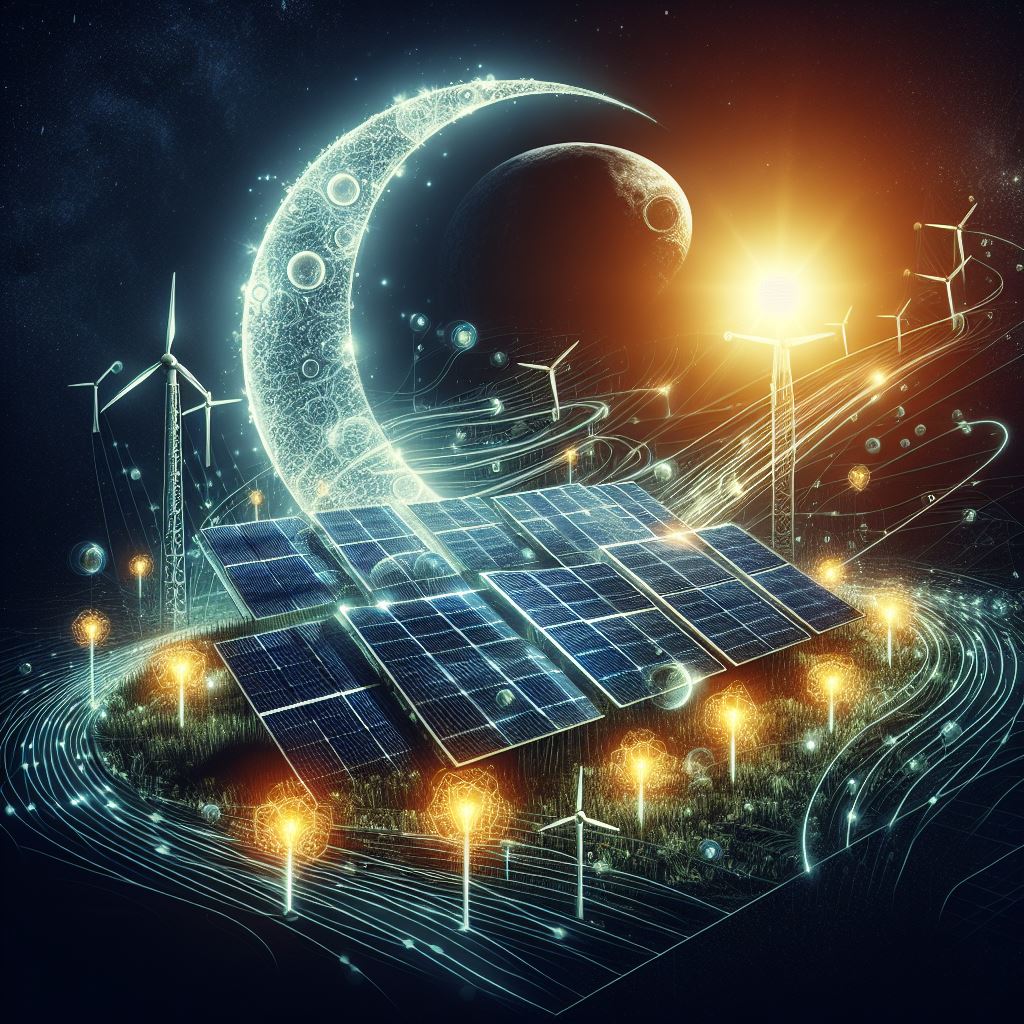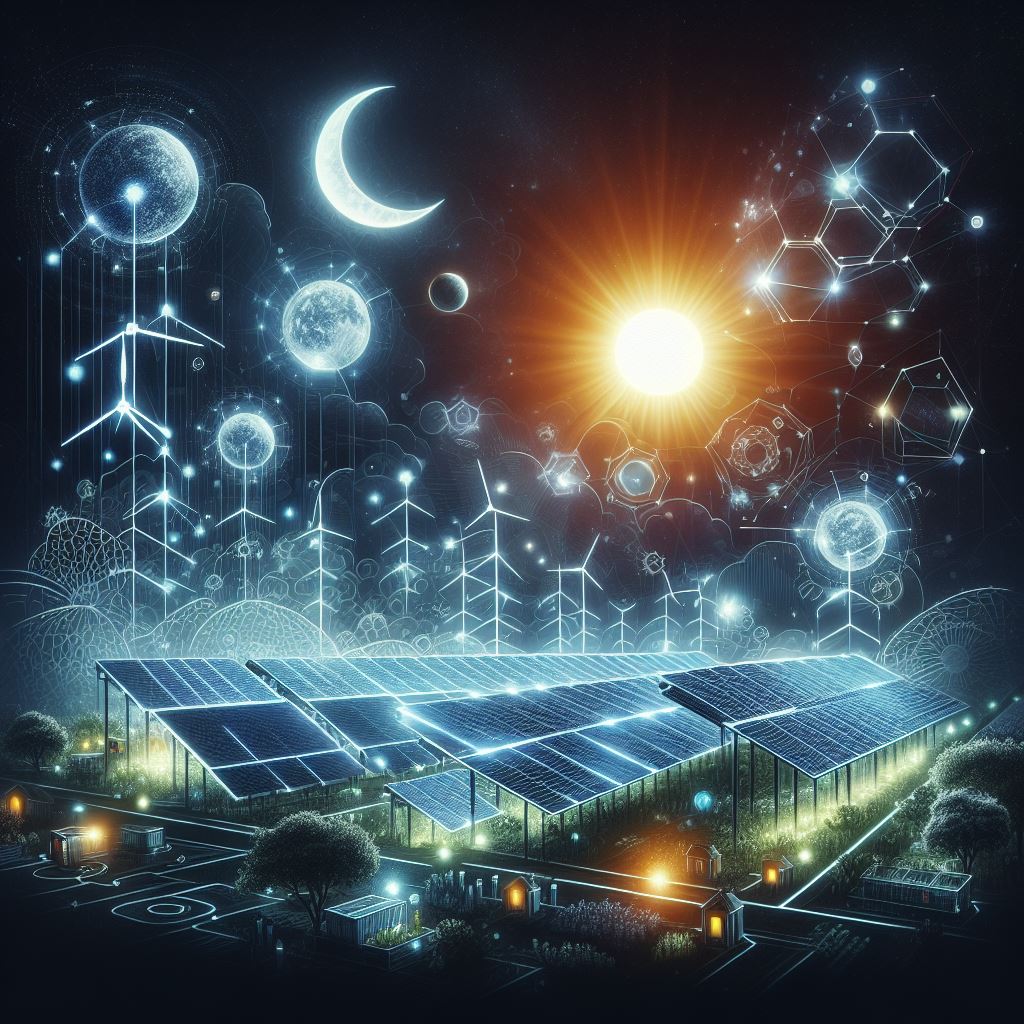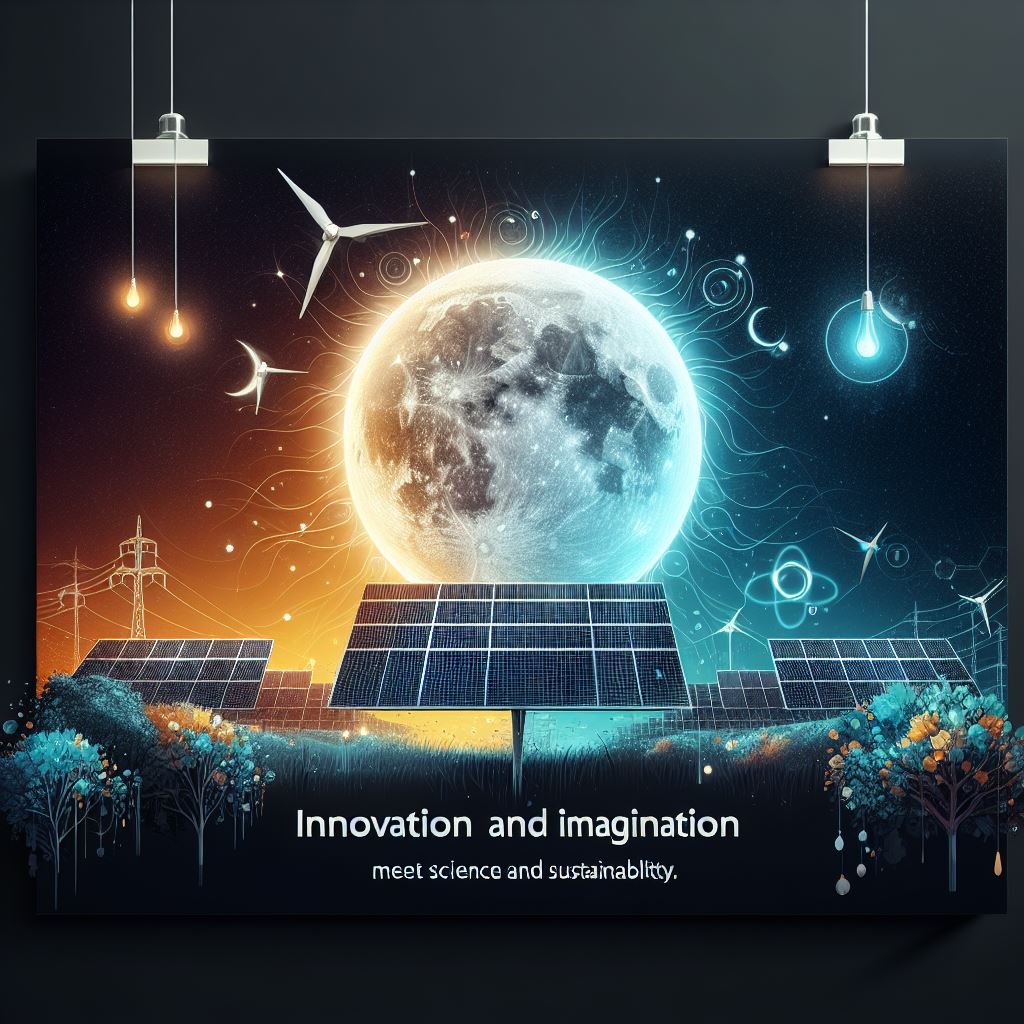Contrary to popular belief, “Solar Panels Work at Night”solar panels don’t generate electricity at night. But fear not! This comprehensive guide explores how solar power can still fuel your home after sunset, along with exciting advancements in nighttime solar technology.
Shedding Light on Solar Power
Solar panels have become a beacon of clean energy, harnessing the sun’s rays to power our homes and businesses. But how exactly do they work, and can they keep the lights on after dark?
Understanding the Mechanism of Solar Panels in Generating Electricity
Solar panels operate on a fascinating scientific principle known as the photovoltaic effect. Manufacturers engineer solar cells using high-purity silicon infused with precise amounts of other elements like boron and phosphorus, creating a substance capable of absorbing photons, the fundamental particles of light. When sunlight strikes the panel’s surface, photons transfer their energy to electrons within the material. These energized electrons begin to move, initiating the flow of electric current or energy.

While all solar panels leverage the photovoltaic effect, their performance varies depending on the materials utilized:
- Panels crafted from monocrystalline silicon cells boast the highest efficiency and are prevalent in residential settings.
- Panels incorporating polycrystalline silicon cells offer a moderate efficiency level and often come at a lower cost compared to monocrystalline alternatives.
- Thin-film panels generally exhibit lower efficiency overall, although certain thin-film materials can rival the efficiency of polycrystalline cells.
The Science Behind Solar Panels
Traditional solar panels rely on the photovoltaic effect. Sunlight consists of tiny packets of energy called photons. When these photons strike a solar cell, they knock electrons loose, creating an electric current. This current is then channeled and converted for household use.
Here’s the catch: for this process to occur, sunlight is essential. So, conventional solar panels simply can’t generate electricity at night.
Powering Through the Night: Alternative Solutions
While nighttime electricity generation from solar panels themselves isn’t possible yet, there are ways to leverage the power you produce during the day to meet your nighttime needs:
- Battery Storage: By installing a solar battery storage system, you can store excess solar energy generated during the day and use it to power your home at night. This is a great option for maximizing solar energy use and reducing dependence on the grid.
- Net Metering: Net metering allows you to sell excess solar power you generate back to the grid during the day. Then, at night, you can buy power back from the utility company at a reduced rate. This system essentially creates a credit system for your solar energy production.
- Grid Integration: As solar technology advances, so does grid integration. In the future, a more robust and interconnected grid could allow for storing excess solar energy on a larger scale, ultimately benefiting all users.
A Glimpse into the Future: Nighttime Solar Power on the Horizon?
Researchers are constantly innovating, and exciting advancements in solar technology offer a glimpse into a future where nighttime solar power generation might be a reality. Here are two promising areas of exploration:
- Radiant Cooling Technology: This technology utilizes the natural cooling effect that occurs at night when solar panels radiate heat back into space. By incorporating thermoelectric generators, this escaping heat could potentially be converted into electricity.
- Luminescent Solar Concentrators: These next-generation solar cells can supposedly absorb not just sunlight, but also faint moonlight and even invisible light from the night sky, potentially generating a trickle of electricity at night.
These technologies are still in their early stages, but they hold the promise of a future where solar power can truly be a 24/7 source of clean energy.

Do solar panels operate in overcast conditions?
Yes, solar panels do function during cloudy days — albeit not as efficiently as under clear skies. Anticipate a reduced power output, typically ranging from 10 to 25% of their usual capacity, depending on cloud density.
However, there’s an intriguing aspect to this: while solar panels indeed perform better under sunny conditions compared to cloudy ones, they aren’t at their optimal in extremely hot climates. Surprisingly, the output of solar panels starts to decline once the panel surface temperature surpasses 77 degrees Fahrenheit (25 degrees Celsius).
It might come as a surprise that solar energy systems are embraced in regions known for frequent overcast skies, such as Seattle, which holds the title for the most cloudy days in America. Similarly, Portland, Oregon, the second cloudiest city, is ranked among the top U.S. cities for solar power adoption. These cities benefit from extended summer daylight hours and moderate temperatures, creating ideal conditions for maximizing solar energy production, thereby offsetting lower output during the cloudy winter months.
In summary, while solar panels do operate during cloudy days, their efficiency is reduced. Moreover, their performance dips in excessively hot weather. Nevertheless, solar panels can still be a viable and worthwhile investment across various climates.
The Impact of Natural Light
Solar panels thrive under direct sunlight, yet they can still harness some energy from ambient light. If you have a system to monitor energy, you’ll likely observe the following trends:
- At dawn, solar panels begin generating a modest amount of electricity, even before the sun fully emerges.
- Throughout the morning, electricity production steadily increases, peaking around midday.
- As the afternoon progresses, the output gradually diminishes.
- Once sunlight diminishes completely, whether due to nighttime or cloudy weather, electricity production ceases.
While solar power peaks around noon, even energy generated from indirect sunlight contributes to your overall savings. The World Bank Global Solar Atlas offers insights into sunlight availability, both direct and indirect, in your area.
Factors Influencing Solar Panel Performance
Solar panel wattage and efficiency are determined under controlled lab conditions. However, real-world performance varies due to several factors:
Panel Orientation
The sun’s position shifts with the seasons and throughout the day, impacting the amount of sunlight reaching your panels. Consider the following:
- Panels facing south receive the most sunlight annually, making them the most efficient.
- Conversely, north-facing panels receive less sunlight and consequently generate less energy.
- East-facing panels excel in morning energy production while west-facing ones are optimal for afternoon output.
- A professional installer can assess your property’s orientation to optimize panel placement.
Panel Temperature
Solar panels thrive on sunny days but may lose efficiency in extreme heat. Manufacturers provide a temperature coefficient to gauge performance in varying temperatures:
- For instance, a panel with a coefficient of -0.37% per °C experiences a 3.7% power loss with a 10°C temperature rise.
- High-quality panels boast coefficients below -0.40% per °C, with some brands achieving values under -0.30% per °C.

FAQs about Solar Panels Work at Night
Do solar panels work on cloudy days?
Yes, although they will generate less electricity compared to sunny days. Even on cloudy days, some sunlight reaches the panels, allowing for some power generation.
How much do solar panels cost?
The cost of solar panels varies depending on system size, brand, and location. However, with government incentives and falling installation costs, solar power is becoming increasingly affordable.
Is solar power right for my home?
A solar feasibility study can help determine if your home is a good candidate for solar panels. Factors like roof size, sunlight exposure, and local electricity rates will be considered.
How much maintenance do solar panels require?
Solar panels require minimal maintenance. They should be kept clean of debris for optimal performance, but typically require no specialized care.
What are the environmental benefits of solar power?
By reducing reliance on fossil fuels, solar power helps combat climate change and air pollution.
Where can I learn more about solar power?
Many government agencies and renewable energy organizations offer resources and information about solar power. You can also consult with a reputable solar installer for a personalized assessment.
By understanding the current limitations and exciting prospects of solar power, you can make informed decisions about harnessing the sun’s energy to meet your energy needs.
Conclusion
While solar panels may not generate electricity directly at night, innovative solutions and technological advancements offer promising pathways to maximize nighttime solar power production. From energy storage systems to smart grid integration, the potential for nocturnal solar energy is vast. By embracing sustainable energy practices and fostering continued research and development, we can illuminate the path toward a brighter, cleaner energy future.
Visit our Site:
Welcome to EG Power Ltd – your go-to destination for solar solutions. With over five years of experience in solar and renewable energy, we’re dedicated to providing the most cost-effective panels on the market.
We prioritize environmental sensitivity and offer personalized solutions to meet your needs. Join us in saving the planet – contact us today!
Phone: 0300 1819060
Email: info@egpowerltd.com
